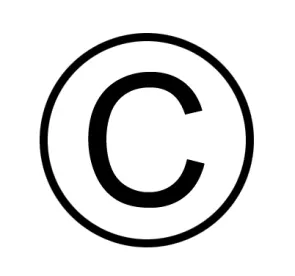Manufacturers may assume that protection of their brands can only be achieved through trademark protection of names, logos, and slogans. In fact, a broad arsenal of intellectual property tools is available to ensure that third parties do not infringe a manufacturer’s rights in its brand and products. This article discusses some of the tools under U.S. law, other than trademark law, that manufacturers should consider as part of their arsenal of brand protection.
Trade Dress
Whereas trademark law protects brand names, product names, slogans, and logos which function as an indicator of the source of goods or services, federal law also provides for the protection of other brand-identifying features through trade dress protection. Like a trademark, trade dress identifies a single source for a product or line of products, and trade dress owners are entitled to enforce their trade dress against infringing uses which create a likelihood of confusion among consumers. The most traditional forms of trade dress are labels and package designs, but other source-identifying elements, including product designs, can also be protectable.
To receive protection, trade dress must consist of a specific, consistent design element; the overall “style” or “look and feel” of a product is not eligible for protection. In addition, trade dress cannot be functional: a design feature is functional if is essential to the use or purpose of the product, if it impacts the cost or quality of the product, or if it is necessary for competitors to also use the feature at issue.
In the case of product design, the trade dress owner must prove “secondary meaning”: that the public has come to recognize a particular product design as coming only from a single source. Generally, this means that, in order to receive trade dress protection, a product design must have been in use for sufficient time to have become well-established in the public perception.
A recent example of product design protection, and an attempt to enforce such protection, is Converse Inc. v. ITC, No. 2016-2497, 2018 WL 6164571 (Fed. Cir. Oct. 30, 2018). Converse held a trade dress registration in the midsole design of its Chuck Taylor shoes, consisting of elements including the design of two stripes on the midsole, the design of the toe cap, and the design of and geometric patterns on the toe bumper. It alleged that various other shoe manufacturers were making shoes with confusingly similar midsoles and infringing its trade dress. The International Trade Commission (“ITC”) found that the Converse design registration was not eligible for protection because secondary meaning was not established. However, recently, on October 30, 2018, the Federal Circuit issued an opinion reversing the ITC’s finding that the design was not eligible for protection, and established a new test for secondary meaning. This six factor test includes the following: (i) association of the trade dress with a particular source by actual purchasers (typically measured by consumer surveys); (ii) length, degree and exclusivity of use; (iii) amount and manner of advertising; (iv) amount of sales and number of customers; (v) intentional copying; and (vi) unsolicited media coverage of the product embodying the mark. The Court also held that designs must be “substantially similar” in the eyes of an ordinary observer in order to infringe protected trade dress.
Like trademark protection, trade dress protection does not have a set term of years, and protection can last for as long as the trade dress is in use, provided that the trade dress owner makes periodic maintenance filings. If a manufacturer can establish secondary meaning in its product design, therefore, trade dress registration can be an incredibly valuable tool to prevent copying by other parties.
Design Patent
Patent protection is not only available for the functional or “useful” parts of an invention, referred to as a “utility patent”; manufacturers can also receive “design patent” protection for ornamental non-functional aspects of a new product.
Design patent protection requires that the design be new and not an obvious modification of an existing design. Design patents typically cover elements such as the shape or configuration of a product, or an ornamental design applied to a product. If the element is functional or dictated by functional concerns, it is not eligible for design patent protection.
The Eastern District of Michigan recently addressed design patent protection in deciding whether Ford’s patents covered designs that were “ornamental” or “dictated by function.” The court contrasted design patent and trade dress law and refused to apply the theory of aesthetic functionality used in the latter to design patents. Auto. Body Parts Ass’n v. Ford Global Techs., LLC, 293 F. Supp. 3d 690 (E. D. Mi. 2018). As a result, the court declined to invalidate or render unenforceable two of Ford’s design patents covering auto-body parts for the F-150 truck. For a more robust discussion of this case, see Jeanne M. Gills & Richard J. McKenna, District Court Rejects Efforts To Invalidate Design Patents on Automobile Parts, Foley & Lardner LLP (Feb. 23, 2018)
Design patent owners have the right to exclude others from making, using, selling or offering for sale a product with an overall design which is substantially the same. Design patents played a key role in the Apple v. Samsung case, in which Apple successfully claimed that Samsung infringed three of its design patents, covering the rectangle shape and rounded corners of its phones, the outer bezel around the front face of its phones, and the arrangement of icons in its graphic user interface. Apple Inc. v. Samsung Electronics Co. Ltd. et al., No. 11-CV-01846 (N.D. Cal. 2012), aff’d as to design patent infringements 786 F.3d 983 (Fed. Cir. 2015), rev’d as to determination of damages 137 S. Ct. 429 (2016).
Notably, design patents only have a term of protection of 15 years, whereas utility patents have a term of 20 years, while trade dress protection can last as long as the design is in use. However, the 15-year design patent term is measured from the grant date of the patent, whereas the 20-year utility patent term is measured from the filing date.
Design patent and trade dress protection can coexist, and manufacturers should consider filing for both design patent and trade dress registrations if a product design qualifies under both standards. Because design patent protection does not require proof of secondary meaning, a well-timed design patent application can offer protection around the time a new product launches. In turn, the exclusivity granted by a design patent can be helpful in proving acquired distinctiveness in a trade dress application at a later date, giving the product design the potentially unlimited term of protection of trade dress.
Copyright
Manufacturers should also consider copyright as a tool in the brand protection arsenal. Copyright protection is available for original works of authorship, such as visual art, music, and literary works. Works such as graphic logos, advertisements, labels, and product manuals can be protected by copyright if they show a minimum amount of creativity.
Useful articles themselves cannot be copyrighted, but some of these articles can have protectable elements. In 2017, the Supreme Court addressed this question in Star Athletica, LLC v. Varsity Brands, Inc., 137 S. Ct. 1002 (2017). This case concerned whether the graphic elements of cheerleading uniforms were eligible for copyright protection. The Supreme Court held that an artistic feature of the design of a useful article such as clothing is eligible for copyright protection if the feature: (i) can be perceived as a work of art separate from the useful article and (ii) would qualify as a pictorial, graphic, or sculptural work eligible for protection if imagined separately from the useful article.
Copyright owners have the ability to prevent others from reproducing, copying, displaying, performing, or creating derivative works from their copyrighted work. Use by another can be found infringing if it is substantially similar to the original work.
Copyright protection lasts for the life of an individual author plus 70 years or, in the case of corporate authorship, for the shorter of 95 years from publication or 120 years from creation.
As with trademark, trade dress, and patent, copyright-eligible works may be federally registered. These works also receive some degree of copyright protection regardless of registration. However, registration (or at least a pending copyright application in certain jurisdictions) is required to file an infringement lawsuit. In addition, a timely registration within three months of publication confers benefits including the ability to recover statutory damages and attorneys’ fees in litigation.
Trade Secret
In some ways, trade secret protection is the antithesis of the other intellectual property protections discussed in this article. While other types of protection require disclosure of the property, trade secret protection requires that the owner have taken reasonable measures to keep the information secret. Nevertheless, trade secret can be a useful tool with respect to some product or business information.
Trade secret protection is available for a wide range of information, including financial, business, technical, and engineering information, so long as that information derives independent economic value from not being known by or available to other people. For example, lists of business contacts or methods of creating products can be protectable trade secrets. Trade secret protection continues for as long as the information is kept secret, but it does not protect from “reverse engineering” by competitors.
Trade secret protection was previously only available at the state level, but the Defend Trade Secrets Act of 2016 established federal protection for trade secrets. As such, manufacturers may have a cause of action at the state or federal level for the misappropriation of trade secrets by others.
Information protected by trade secret law most often intersects with utility patent-eligible material. However, registration of a patent makes the information public and negates any trade secret protection. Therefore, manufacturers should choose between one or another because the subject of publically disclosed patent cannot also be a confidential trade secret.
Conclusion
As noted above, there are many weapons at a manufacturer’s disposal in order to protect its brand. There are even some that are not mutually exclusive so a brand owner can arm its war chest with more than one. In each instance, however, a manufacturer should carefully consider which tool is best suited to the information or product at issue in order to take advantage of as many protections as possible.




 />i
/>i

